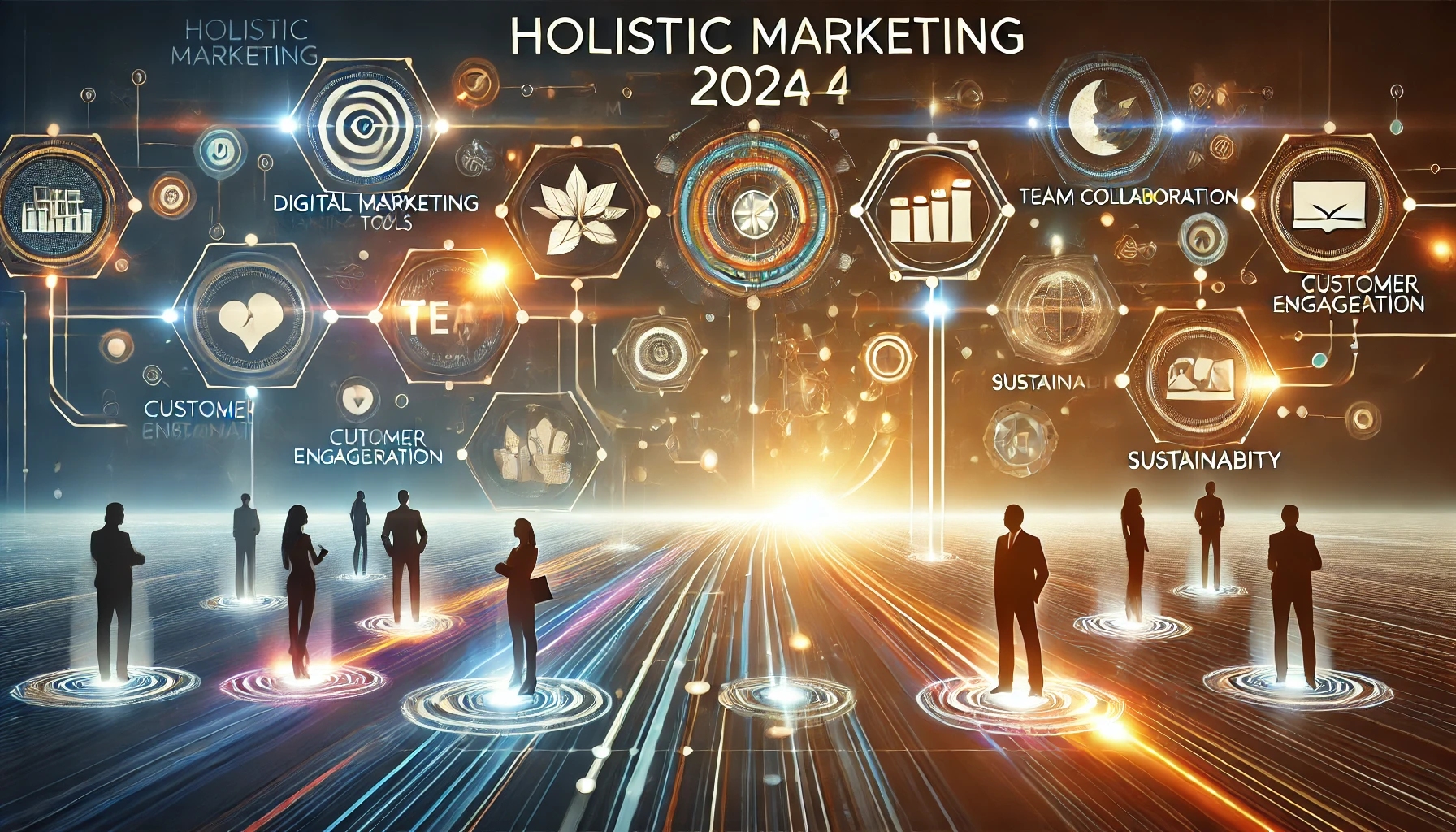Holistic marketing is an all-encompassing strategy that unites every aspect of a business to deliver a seamless and consistent experience. By integrating internal processes, external communication, and customer engagement, holistic marketing ensures that all efforts align toward achieving a unified goal. It emphasizes synergy across marketing channels, organizational departments, and even societal responsibilities, creating a harmonious balance that drives sustainable growth.
At its core, holistic marketing focuses on four key pillars: relationship marketing, integrated marketing, internal marketing, and societal marketing. Relationship marketing nurtures long-term customer loyalty by prioritizing satisfaction over short-term gains. Integrated marketing ensures consistency across advertising, sales, and digital platforms, reinforcing a unified brand identity. Internal marketing empowers employees, aligning them with the company’s mission to enhance customer interactions. Finally, societal marketing incorporates ethical and sustainable practices, balancing organizational success with social impact.
What is Holistic Marketing?
Holistic marketing ensures all business and marketing efforts function cohesively. From internal team alignment to customer interactions, every element is interwoven into a seamless framework.
The Four Core Components of Holistic Marketing:
- Relationship Marketing
Build strong, long-term connections with customers by focusing on their satisfaction and loyalty. Think of it as nurturing a garden that yields sustained growth. - Integrated Marketing
Synchronize all marketing channels, from digital ads to direct communication, ensuring a unified and consistent message. - Internal Marketing
Motivate employees to embrace the company’s vision and become ambassadors of its goals. An inspired team delivers a seamless customer experience. - Societal Marketing
Balance organizational goals with societal well-being by adopting sustainable and socially responsible practices.
Why Holistic Marketing Matters
Unified Vision Across Channels
A cohesive approach avoids mixed messaging and builds trust with your audience.
Maximized Resource Utilization
Streamlined efforts reduce redundancies and enhance efficiency, delivering higher ROI.
Improved Customer Experience
By focusing on relationships, businesses cultivate loyalty and advocacy among customers.
Real-World Examples
- Starbucks: Beyond Coffee
Starbucks doesn’t just sell beverages—it curates an experience. From cozy store designs to its mobile app, every touchpoint is aligned to resonate with the brand’s promise. - Apple: Seamless Integration
Apple’s holistic marketing spans product innovation, minimalist packaging, and engaging customer support. Each component works together to elevate the brand experience.
Steps to Build a Holistic Marketing Strategy
1. Align Marketing Efforts
Ensure all departments share a unified vision and objectives. Use tools like Slack, Asana, or Trello for team collaboration and transparency.
2. Integrate Internal and External Marketing
Empower your team with the company’s mission and align it with customer-facing strategies. Consistency in branding and communication ensures a cohesive experience.
3. Strengthen Customer Relationships
Prioritize personalized engagement through emails, surveys, and social media interactions. Loyal customers drive referrals and repeat business.
The Role of Digital Channels in Holistic Marketing
Digital platforms are pivotal for holistic marketing, connecting brands with customers globally. Here’s how to leverage them effectively:
- Social Media: Platforms like Instagram and LinkedIn enable real-time engagement and brand storytelling.
- Email Marketing: Personalized emails foster deeper connections with customers.
- Analytics Tools: Use tools like Google Analytics or HubSpot to track performance and refine strategies.
Future Trends in Holistic Marketing
- AI and Machine Learning
Predictive analytics and AI-powered chatbots will personalize customer interactions, enhancing the marketing journey. - Enhanced Personalization
Customers now expect tailored experiences. Personalization across all touchpoints will drive engagement and loyalty. - Social Commerce Integration
Social platforms are evolving into full-fledged e-commerce hubs, enabling direct customer transactions.
Achieving Success
To succeed, businesses must dismantle silos and foster collaboration across teams. A shared customer-centric vision drives better outcomes, from brand perception to revenue growth.
Start by:
- Conducting an internal audit to identify gaps.
- Drafting a comprehensive integration plan.
- Prioritizing customer delight in every decision.
Final Thought: Embrace the Symphony of Holistic Marketing
Holistic marketing invites businesses to craft memorable experiences by harmonizing every aspect of their strategy. As you embark on this journey, ask yourself: How can holistic transform your brand’s relationship with its audience?
May this guide inspire your brand to thrive in the era of holistic. Your symphony awaits






One Response